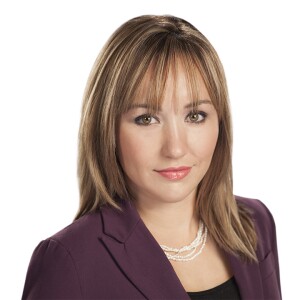EASTPOINTE, Mich. (WXYZ) — 7 Action News told you last month how state lawmakers had missed a deadline to release billions of dollars in federal funding. Now they are taking steps towards getting that money with a deadline and other federal funds to schools across the state.
The Michigan Senate this week voted to release nearly $4.4 billion in federal pandemic relief money to K-12 schools. The House is expected to vote on the bill this week.
“We are pleased with the progress to find a bipartisan solution that will help Michigan families,” was the response in a statement from Governor Gretchen Whitmer’s office.
It is hard to put a dollar amount on the cost of COVID-19. In Eastpointe Community Schools it is clear students are feeling the pain of the pandemic.
“For example, we have seen an increase in the number of students who have attempted suicide,” said Superintendent Ryan McLeod.
Students have lost loved ones, experienced financial hardships, faced evictions from their homes, and fallen behind at times academically. The cost of helping them is hard to quantify.
Poverty poses challenges for many students in Eastpointe Community Schools. The district says about 73% of students are eligible for free or reduced lunches.
In Eastpointe, the federal formula for distributing much of the funding which considers poverty rates indicates the district should receive about $18 million. To put that in perspective, recent general fund budgets in the district have been just over $30 million a year.
The district plans to first improve ventilation in buildings, such as the almost 100-year-old high school, and help struggling students.
“There are academic and other social-emotional needs we need to do with our students, but the other side of it is, what are the things we can do with the money today that will pay dividends for years into the future?” said Superintendent McLeod.
McLeod says the district needs to review any restrictions the state puts on the funds. There has been talk about starting a free preschool program. The idea is that preschool would improve student performance for years to come.
“Any district that in the past has said we didn’t have the money to do something, that shouldn’t even be an argument or conversation,” said State Rep. Tyrone Carter (D-Wayne County)
‘It is huge. It is a once in a generation opportunity,” said Robert McCann, Executive Director of the K-12 Alliance of Michigan.
McCann has criticized state leaders for not releasing the money sooner. He points out that the bill approved by the State Senate would not release all federal money for schools available. It only releases money that the federal government’s formulas explicitly dictated how it should be released.
There is discretionary funding that McCann suggests be used to address gaping disparities in how much the federal government has directed go to schools with high poverty rates versus other schools. A House Bill created an equalization fund to ensure that wealthier districts get at least $1098 per student. That legislation has been removed in the bill passed by the Senate. You can see how much that is costing districts in this document.
ESSER III Equalization Impact - HB 4421 - Calcs by WXYZ-TV Channel 7 Detroit on Scribd
Schools don’t yet know what restrictions will be placed on how the money is spent.
McCann says he hopes the legislature allows schools to use this money or state surplus dollars to pay down pension debt to the state. He says that would eliminate future obligations and potentially change education in Michigan for years to come.
“Then we will have made a difference, not only in the lives of children this year but for children in the years to come now,” said McCann.
“While I think this money can be transformational, I don’t think it guarantees what is going to happen in the future,” said McLeod. “We need continued long-term investments in education to really see this money become transformational.”



